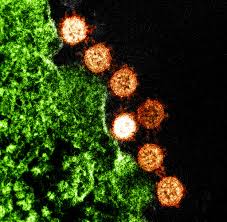When COVID-19 spread around the globe this year, David Montefiori wondered how the deadly virus behind the pandemic might be changing as it passed from person to person. Montefiori is a virologist who has spent much of his career studying how chance mutations in HIV help it to evade the immune system. The same thing might happen with SARS-CoV-2, he thought.
In March, Montefiori, who directs an AIDS-vaccine research laboratory at Duke University in Durham, North Carolina, contacted Bette Korber, an expert in HIV evolution and a long-time collaborator. Korber, a computational biologist at the Los Alamos National Laboratory (LANL) in Sante Fe, New Mexico, had already started scouring thousands of coronavirus genetic sequences for mutations that might have changed the virus’s properties as it made its way around the world.
Compared with HIV, SARS-CoV-2 is changing much more slowly as it spreads. But one mutation stood out to Korber. It was in the gene encoding the spike protein, which helps virus particles to penetrate cells. Korber saw the mutation appearing again and again in samples from people with COVID-19. At the 614th amino-acid position of the spike protein, the amino acid aspartate (D, in biochemical shorthand) was regularly being replaced by glycine (G) because of a copying fault that altered a single nucleotide in the virus’s 29,903-letter RNA code. Virologists were calling it the D614G mutation.
In April, Korber, Montefiori and others warned in a preprint posted to the bioRxiv server that “D614G is increasing in frequency at an alarming rate”1. It had rapidly become the dominant SARS-CoV-2 lineage in Europe and had then taken hold in the United States, Canada and Australia. D614G represented a “more transmissible form of SARS-CoV-2”, the paper declared, one that had emerged as a product of natural selection.
These assertions dismayed many scientists. It wasn’t clear that the D614G viral lineage was more transmissible, or that its rise indicated anything unusual, they said. But alarm spread fast across the media. Although many news stories included researchers’ caveats, some headlines declared that the virus was mutating to become more dangerous. In retrospect, Montefiori says he and his colleagues regret describing the variant’s rise as “alarming”. The word was scrubbed from the peer-reviewed version of the paper, published in Cell in July2.
The work sparked a frenzy of interest in D614G. Even those who were sceptical that the mutation had changed the virus’s properties agreed that it was intriguing, because of its meteoric rise and ubiquity. For months, that lineage has been found in almost all sequenced samples of SARS-CoV-2 (see ‘Global spread’). “This variant now is the pandemic. As a result, its properties matter,” wrote Nathan Grubaugh, a viral epidemiologist at the Yale School of Public Health in New Haven, Connecticut, and two colleagues in a Cell essay on Korber and Montefiori’s findings3….







